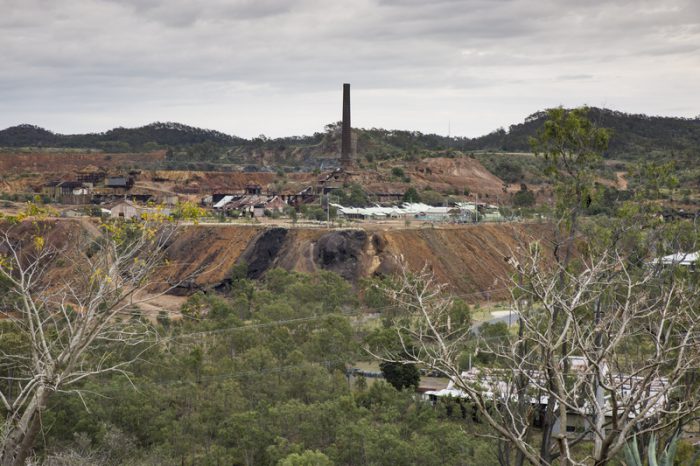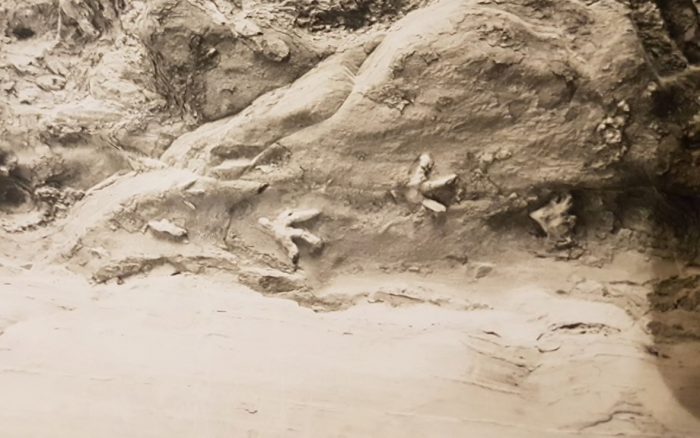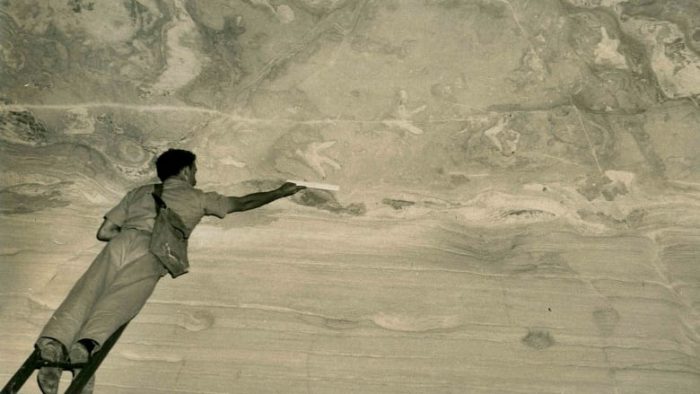Picture this. You're in a cave. You scan your surroundings and you see ... dinosaur footprints! Wow! And dinosaur expert that you are, the footprint fossils tell you that they belong to a prehistoric predator. But ...
The footprints appear to be grouped in fours, with larger hind legs and smaller fore legs. But almost all known carnivorous dinosaurs walked on two legs. So is this an entirely new four-legged species?
And, oh yeah! The footprints are on the ceiling.
Huh?
The Mystery of Fireclay Caverns

The abandoned Mount Morgan Mine today. (© Grant Phillips - Dreamstime.com)
Welcome to the mystery of Fireclay Caverns, where dinosaur footprints where found on a cave ceiling near an old mine in Queensland, Australia. This mystery surrounding what dinosaur made them and how they got there has puzzled paleontologists for decades. Now University of Queensland paleontologist Anthony Romilio claims to have solved it.
Dino discoveries
At one time, Mount Morgan Mine had a brickworks (brick-making factory); caves were dug to mine clay for bricks. This created the Fireclay Caverns, openings in the earth that range from 4 to 12 metres (13 to 40 feet) high.
But unfortunately, excavating the fossils in these caves was a challenge. Did we mention how high up they were? And then about 10 years ago, the cave was shut down for safety reasons, leaving people to wonder if this mystery would ever be solved.
Chance meeting
But one day, paleontologist Anthony Romilio met someone named Roslyn Dick at a farmer's market. When Anthony mentioned he was a paleontologist, Roslyn said that her dad had been well-known fossil-hunting geologist Ross Staines. And that she still had his fieldwork materials kept in a cupboard under the stairs... including some from the Fireclay Caverns!
The materials included photographs, charts, and even a cast of one of the footprints. Using Staines' archives, Anthony was able to make some new discoveries.
Turning upside down right side up

Tracks! On the ceiling! (Courtesy of Anthony Romilio)
He believes the footprints were not made by a single four-legged dinosaur, but by a pair of two-legged carnivores, one was slightly smaller than the other.
And get this: the animals weren't walking on the cave ceiling. They were walking above it.
200 million years ago, the dinos had left their footprints in the soft clay. They were then filled in and covered by sediment (this is called 'infill'). Over millions of years, the clay underneath hardened and became claystone, and the infill became sandstone.
When the Fireclay Caverns were excavated, all that claystone was removed and fell away, revealing the sandstone above... and the infill dinosaur fossils on the ceiling! Anthony hopes that these insights will inspire others to reexamine these unique fossils.
Flip it
Quite a story, huh? And while you can't tour the caves yourself, check out Anthony and the University of Queensland's 3D model of Dr. Staines' footprint cast! To interact with the model, press play, then click and drag.
 This photo from the 1950s of legendary Australian paleontologist Ross Staines helped solve the mystery. (Courtesy of Anthony Romilio)
This photo from the 1950s of legendary Australian paleontologist Ross Staines helped solve the mystery. (Courtesy of Anthony Romilio)










What!